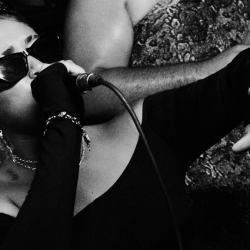Given it is the season of marketers donating to celebrities via Super Bowl advertising, I want to talk about using faces as Distinctive Assets. Faces draw category buyer attention because we are social/tribal beings. In any new environment, our attention naturally goes to any faces present. Are they familiar or unfamiliar, friend or foe, do I need to deploy a ‘fight or flight’ response or can I relax? One of the most valuable ways to use a face is to turn it into a Distinctive Asset, so it evokes the brand for category buyers. This makes it both familiar and relevant to the buyer.
The power of a celebrity face as a Distinctive Asset
‘Tis Super Bowl season, where advertisements have an abundance of celebrities, and many of which are ad hoc efforts to grab attention. However, some brands have ongoing paid endorser relationships with celebrities. Dr Cathy Nguyen, Dr Lucy Simmonds and I wanted to see if it was the power of the face, or whether knowing the celebrity’s name made a difference to the celebrity’s strength as a Distinctive Asset.
In an empirical study across celebrity-brand pairs for actors, musicians, and sports stars, we found that if someone could put a name to the celebrity face, they were on average four times more likely to link that celebrity to a brand they were paid to endorse. For example, those who knew that face was Jennifer Aniston were more likely to link her to Aveeno, than those who did not know her (27% versus 5%). Therefore, a celebrity face is a more powerful Distinctive Asset when someone knows their name.
The power of faces to draw attention to advertising
In another project led by Julian Major, we tested whether Distinctive Assets did a better job of drawing attention to an online banner advertisement than the brand name. Included were three face assets with mid-level Fame (% of category buyers that link the brand to the asset). These assets were the faces for Dos Equis, (Uncle) Ben’s and Old Spice.
The experiment involved reading articles on a mock website with online advertising. All respondents saw the same ad with the same face in the same story, the only difference is one group linked the face to a brand, while the other group did not. The test was to if they remembered the advertisement after an unrelated task. If brand relevance doesn’t matter, these scores will be the same.
The results below show that post-exposure advertisement recognition is significantly higher if the face is a Distinctive Asset. Therefore, a previously unknown face works better when it becomes known as a Distinctive Asset.

So celebrities are the best faces…?
We have two related findings. First, celebrities are stronger Distinctive Assets when they are known. Second, when faces are Distinctive Assets, they help online advertising be more noticeable. Does that make well-known celebrities better branding devices?
The answer is yes compared to less well-known celebrities, but no compared other possible faces you could choose. If we take a wider lens and consider results from testing across three possible face types: characters and spokespeople outperform celebrities in both Fame and Uniqueness. Using a celebrity face gives you an initial attention boost because they are known entities, but celebrities come with other mental baggage that can stifle brand retrieval. We found around only 36% of brands evoked by a celebrity image were brands with paid endorsements. Other brands included TV shows, movies, sporting events, famous spouses, confusion with competitor brands, as well as the celebrities’ own product/brands. Celebrity’s public lives means people also build up other associations, all of which compete with your brand in buyer memory. I wonder how many of people in the US who know Travis Kelce are thinking about Subway.
An effective Distinctive Asset is about being a relevant face, where relevance is defined by the link to the brand. Casting a ‘blank space’ face without mental competition might be a better long-term bet than any celebrity.
Maybe a face is ‘born with it’, and has the power to get your attention, maybe it’s also how smartly you select the face, and how long you stick with it, that determines if you build a strong Distinctive Asset.
Additional reading:
- Romaniuk, Jenni (2018), “Faces of a Brand – Celebrities, Spokespeople and Characters,” in Building Distinctive Brand Assets, Jenni Romaniuk, ed. South Melbourne, Victoria: Oxford University Press.
- Major, Julian (2014), “Drawing the spotlight? Investigating the attention grabbing potential of distinctive assets,” University of South Australia.
Featured image: cottonbro studio / Unsplash































